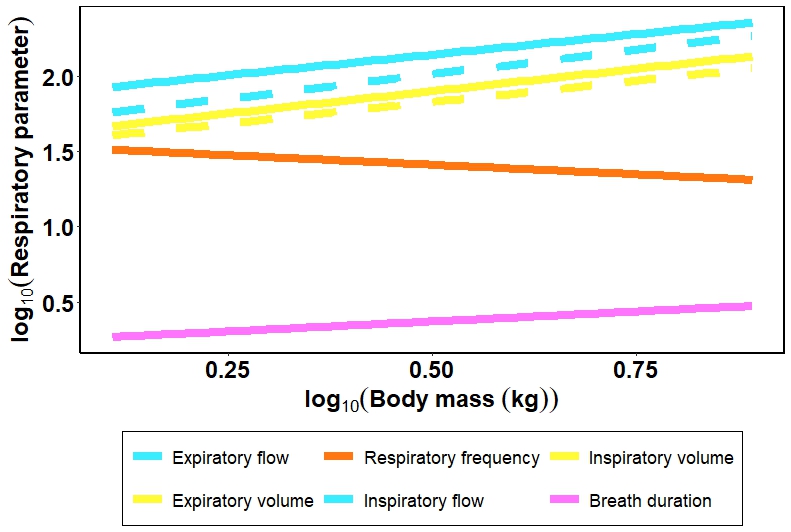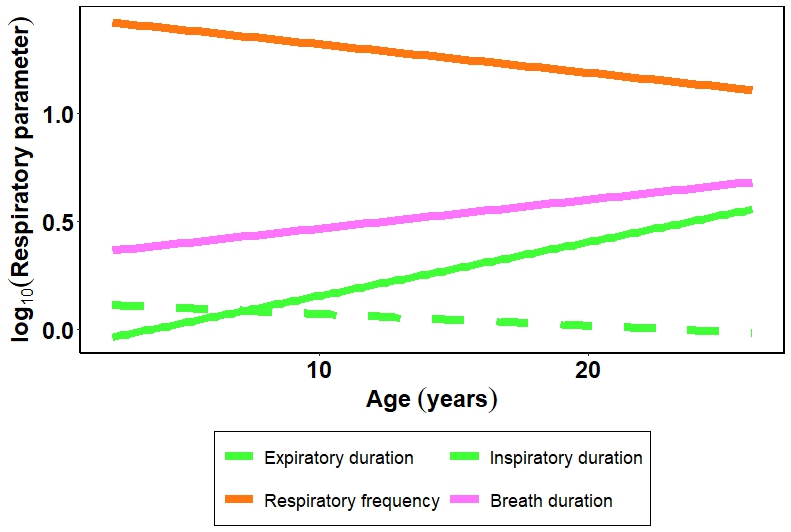Influence of body mass on respiratory parameters
As penguins grew and gained weight, their breathing patterns changed:
- Expiratory and inspiratory flow increased significantly with body mass
- Expiratory and inspiratory tidal volume increased significantly with body mass
- Breath duration increased significantly with body mass
- Respiratory frequency decreased significantly with body mass

Age-related variation in respiratory parameters
When I compared younger adults (around 2 years) to older penguins (24+ years), the older birds showed:
- Significantly longer breath durations
- Significantly lower respiratory frequency

We can see why when we look at their specific breathing patterns:
- Older penguins showed distinct breath-hold periods after inhalation, during which airflow dropped to zero and lung volume remained at its peak until the next expiration.
- Younger adults and chicks, by contrast, maintained a continuous breathing cycle with no pauses.
